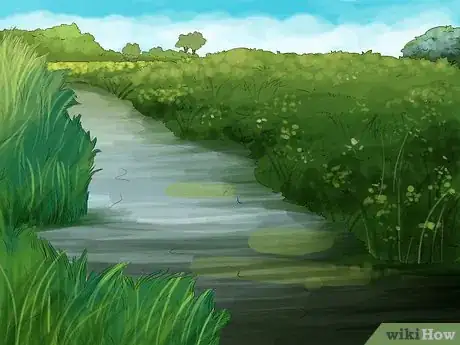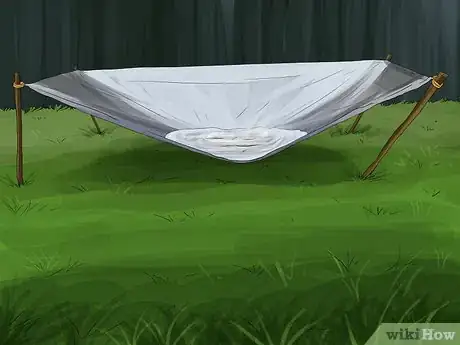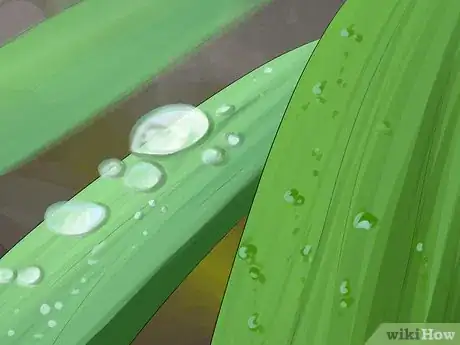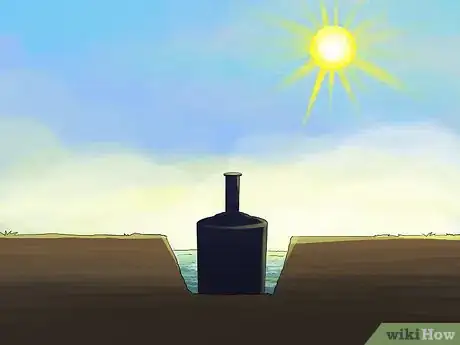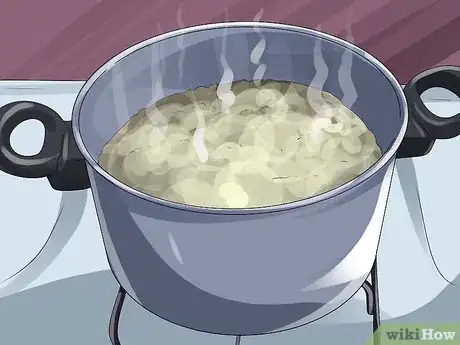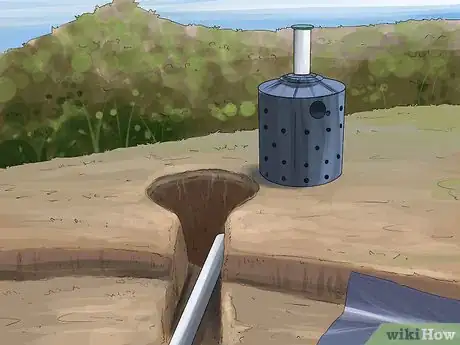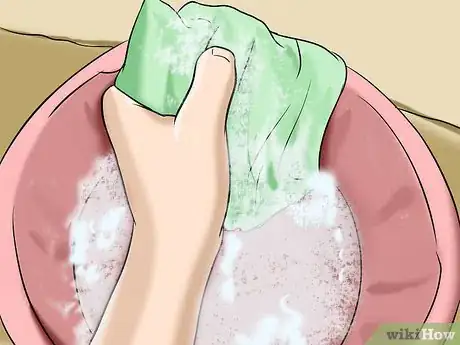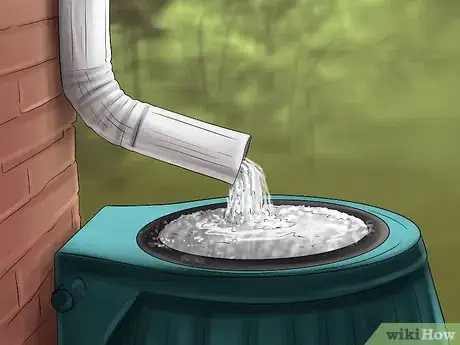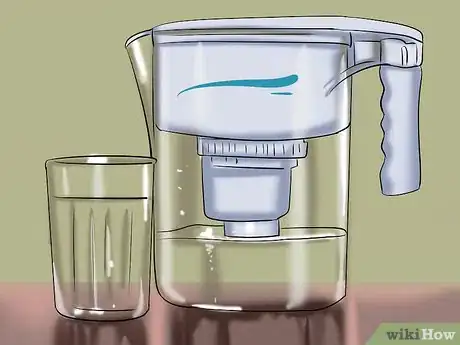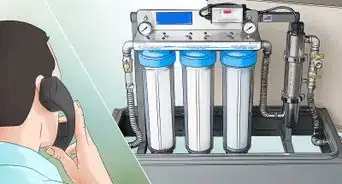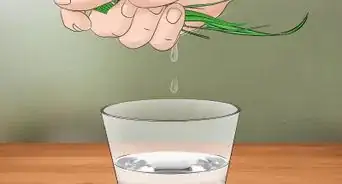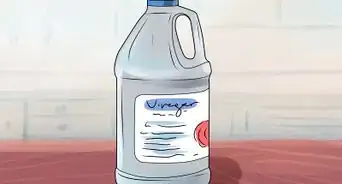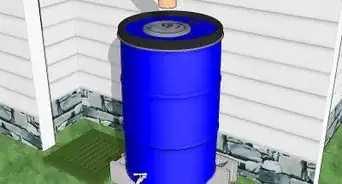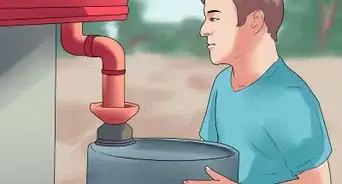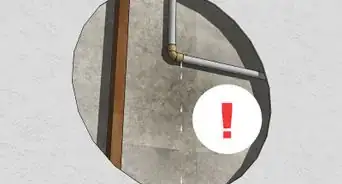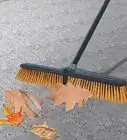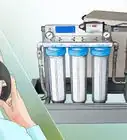wikiHow is a “wiki,” similar to Wikipedia, which means that many of our articles are co-written by multiple authors. To create this article, 20 people, some anonymous, worked to edit and improve it over time.
There are 9 references cited in this article, which can be found at the bottom of the page.
This article has been viewed 59,210 times.
Learn more...
The demand for water has recently increased surpassing supply. This is as a result of industries (Construction, Manufacturing, Cleaning) sprouting fortnight, climatic changes, and poor methods of harvesting water. Therefore, sustainable solutions need to be embraced so as to mitigate this serious issue to ensure optimal availability of water to use in our daily activities. Water collection can be enhanced in two scenarios: as a government initiative and on an individual basis.
Steps
Water-Collection Basics
-
1Know the sources. There are many ways to collect water, and some are more accessible or sanitary than others. Consider the following places from which people often draw their water:
- Rainfall: You can collect and store rainwater. It is usually pure enough for drinking, cooking, and bathing. Beware, however, of the chemical contaminants in "acid rain."[1]
- Groundwater: You can collect water from underground using a tube well or a pump machine. This is usually pure water, although chemicals and bacteria can seep into the water table and contaminate this source.
- From a lake or pond: you can collect water from ponds, but this water is not usually potable. It must be purified before drinking. You can, however, use it for watering or irrigation purposes.
- From a river/canal/sea: This water can be used for irrigation. This is big source of all water of our daily use.
- Water from air: By applying new technology we can get collected water from air. This may be a very small amount, but it could be useful in some circumstances.
-
2Understand grey water. Water collection can be done in a variety of ways, but the one thing in common that they all have is that the water in categorized as grey water. Grey water is water that has contaminants but may not be necessarily toxic, however it does need to be filtered and processed before it is classified as clean.[2] This grey water can be distinguished further by where it comes from and the one that is most suitable for collection is rain water.
- Apart from standard outside water use, grey water can also be used in cooling your house and filtration for more drinking water.
Advertisement -
3Understand how government initiatives encourage rainwater collection. Reports on water management in various locations should be able to highlight most viable and economic ways to tap and harvest water for use.[3] This includes plans on how to achieve water collection through demonstrative projects confirming the same. Some initiatives includes:
- Roof catchments: This can be done on schools, public offices, etc. However, a monitoring plan should be put in place regarding quality, and on the amount of water harvested and used.
- Storm water storage and urban parks: Stormwater storage can be developed in a mid-sized urban park to harvest storm water for use during dry seasons after being treated and also for fire fighting not forgetting urban agriculture.
- Reclamation of waste-water: The possibility of reuse of waste-water should be considered, e.g for irrigation purposes.
-
4Consider collecting water from plants. If you're running out of water and you're around plants, take a plastic bag and tie it around a leafy branch. Make sure that there are no holes in the bag! When plants release water through their leaves in the hot sun, it gathers and pools, and the plastic bag catches some water. Give it some time—maybe a couple of hours.[4]
- You can also wait overnight and gather some water from the morning dew. Try finding a smooth, light surface—like a large plastic board—so that the dew can simply slide off into a leak-proof container.
-
5Gather condensation using a tarp and a container. First, dig a shallow pit in the ground. Then fill it with any vegetation you can find. Put the water-holding container in the center of the pit, then cover everything with the tarp or other waterproof cover. You will want the cover's lowest point to be in the center, over the container. Water will evaporate from the plants, condense on the tarp, and drip into the container, giving you something to drink in the morning.[5]
-
6If you collect rainwater or water from another source in a survival situation, never assume it is drinkable. Rainwater may often carry chemicals or pesticides from nearby fields or plants, and may also have bacteria or parasites in it. To avoid this, boil the water for about 5 minutes.[6]
Collecting Rainwater
-
1Understand the legality. Rain collection is legal in most states, but more and more are edging towards outlawing this practice. Might be best to just "do it" and let the government agency that cares find out on their own. If you ask the government beforehand, you will likely get a "no." You can if you pay collection fees, get your system inspected, and follow any local procedures.[7] Many off-grid homeowners set up a rain catchment system for all their water needs.
- The main idea here is to reduce your water use. Avoid washing your car, minimally water your lawn or shrubs, and practice alternative methods of waste disposal.
-
2Know how to use rainwater. Rainwater is very soft water—great for clothes-washing, bathing, hair shampoo, etc. You can get a simple ceramic cartridge filter ("candle filter") gravity flow system to filter this water and use it for drinking and cooking with no harmful issues. Be careful about collecting rainwater you live in a highly toxic or dense urban area.[8]
-
3Collect rainwater using a gutter system. Run gutters around the larger areas of your house or barn, or carport and pipe into a tank. Even a 50 gallon (190 L) drum will do, but that's not very much water for all the cost of guttering and some piping. You can find 500–800 gallon (2,000–3,000 L) plastic tanks new for around $500 if you shop online—but be aware of high shipping costs. Just look online for these sellers in your area.
- A good rule of thumb is: if you have a one thousand square-foot roof area and have it all guttered and piped into a rain holding tank, you should gather 600 gallons (2,000 L) from a 1" rainfall event.
- Metal roofs are best, but shingle roofs can work fine.
- Most folks will design in a "first flush" device that routes the first 20 or so gallons of run-off into a separate small tank. This "first flush" rainwater will contain dust, bird droppings, small leaves, etc that you don't want to get into your main holding tank.[9] But if not, these items will settle to the bottom of your holding tank and won't be a big problem.
- Most rain tanks have a 2" threaded hole on one side just above the bottom of the tank, so you can attach a hose, or a pump to pump for a distance uphill. You can gravity feed from the bottom of the main tank into your system for garden watering. You can also use a small 12 volt electric, "on demand" pump. Think about how to protect this pump and piping if you live in a cold climate.
Storing Collected Water
-
1Find a place to store the water that you collect to keep it from spoiling. Always use new, food-grade tanks. If you buy one used, make sure you trust the seller as to what was stored in the tank. You don't want to store your water in a barrel that previously held gasoline, transmission fluid, or another potentially-toxic chemical.
-
2Know how much water you can and should collect. Determine how much water you need to collect, depending on zoning restrictions and your water needs. Depending on the climate that you live in, a smaller system might be more effective than others.
- For example: if you want to water a garden and you have no restrictions on having a collection system, then you might just want to have some 20–40 gallon (75.7–151 L) drums with a spigot at the bottom. Support the drums with cinder blocks. You can hook this up to standard rain gutter collection system).
- If you want to be more ambitious—say, a water feature and then some—then you will need: a larger container to accommodate the larger amount of water (or many small containers that make a large system); better supports (a small, reinforced slab); a larger amount of area covered for to gather water; and some pumps.
-
3Always remember to purify your water. You can use iodine tablets, boiling, or other purification methods.[10]
Community Q&A
-
QuestionHow do I replace a dam?
 DonaganTop AnswererBuild a temporary dam upstream, replace the original dam, then remove the temporary dam.
DonaganTop AnswererBuild a temporary dam upstream, replace the original dam, then remove the temporary dam.
References
- ↑ https://www.ncbi.nlm.nih.gov/pmc/articles/PMC5086751/
- ↑ https://www.doh.wa.gov/CommunityandEnvironment/WastewaterManagement/GreywaterReuse
- ↑ https://iwa-network.org/groups/rainwater-harvesting-and-management-rwhm/
- ↑ http://www.dew-drop.com/purewaterextractedfromplants.html
- ↑ http://survivor-magazine.com/water-from-condensation/
- ↑ https://www.freedrinkingwater.com/water-education3/39-water-acid-rain.htm
- ↑ http://www.ncsl.org/research/environment-and-natural-resources/rainwater-harvesting.aspx
- ↑ https://sswm.info/sswm-solutions-bop-markets/affordable-wash-services-and-products/affordable-water-supply/rainwater-harvesting-%28urban%29
- ↑ https://sswm.info/sswm-solutions-bop-markets/affordable-wash-services-and-products/affordable-water-supply/rainwater-harvesting-%28urban%29
